The International Exhibition of 1862
The International Exhibition of 1862, otherwise known as the Great London Exposition, showcased contemporary industrial technology, craftsmanship, art and design from 36 countries from around the world. It was organised by the Royal Society for the Encouragement of Arts, Manufactures and Commerce, and financed from the proceeds of the Great Exhibition of 1851 by the Royal Commission for the Exhibition 1851.
The exhibition ran from 1st May until 1 November 1862, with over 28000 exhibitors participating in the event. It attracted over 6 million visitors throughout its duration, similarly to the Great Exhibition of 1851, and yet only made a profit of £790.
Located in London’s South Kensington, where the Natural History Museum and Science Museum are now situated, the venue for the exhibition had its main frontage on Cromwell Road and spanned 23 acres. The building was designed by Captain Francis Fowke, and built by Charles and Thomas Lucas and Sir John Kelk.
It was unanimously agreed that the International Exhibition did not eclipse the indelible mark in history that its 1851 predecessor left. Whilst it was a larger event than the Great Exhibition, featuring nearly twice the number of exhibitors, the public deemed it too large and overpowering for a single day’s visit, and they disliked the building’s layout and exterior design. It had been Prince Albert’s involvement, energy and enthusiasm for the Great Exhibition that had sold the concept of a world’s fair to the public. However, with Albert experiencing health issues during the late 1850’s, and his sudden death in December 1861, the spectacle of the International Exhibition lacked his presence, input and passion; this being felt by the British people, along with their queen, who were still in mourning.
The International Exhibition of 1862 was still a prestigious event in its own right, with some of the most celebrated box makers displaying their finest work. Among the prize winners for their dressing cases were Asprey, Aucoc, Jenner & Knewstub, Leuchars, Sormani and Toulmin & Gale, with Howell, James & Co receiving an honourable mention.

Venue of the International Exhibition of 1862, located in London’s South Kensington.
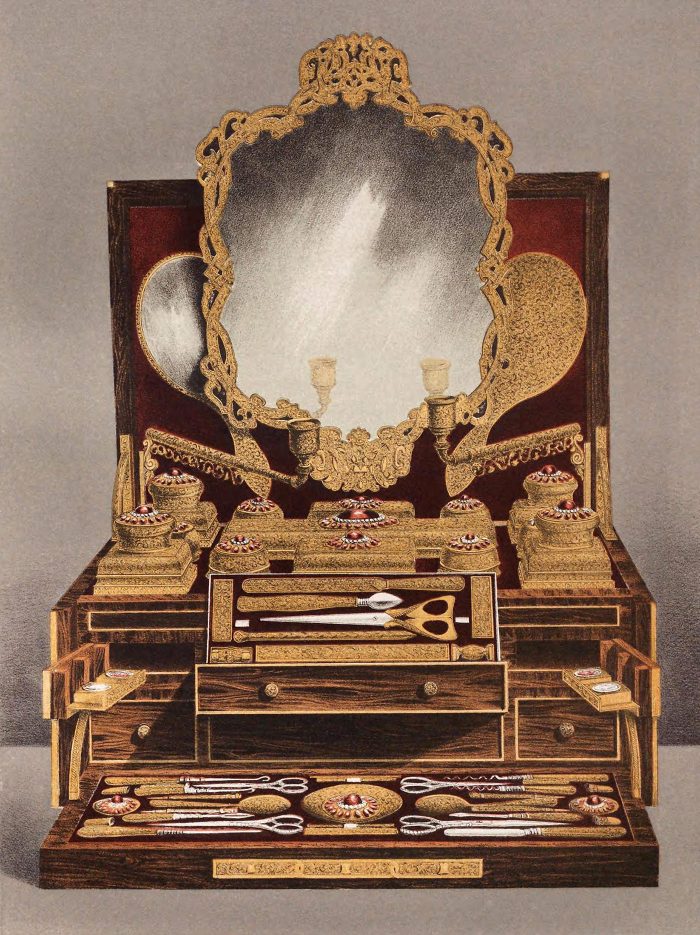
Asprey dressing case exhibited at the International Exhibition of 1862; taken from ‘Masterpieces of Industrial Art & Sculpture at the International Exhibition, 1862’ by J.B Waring.
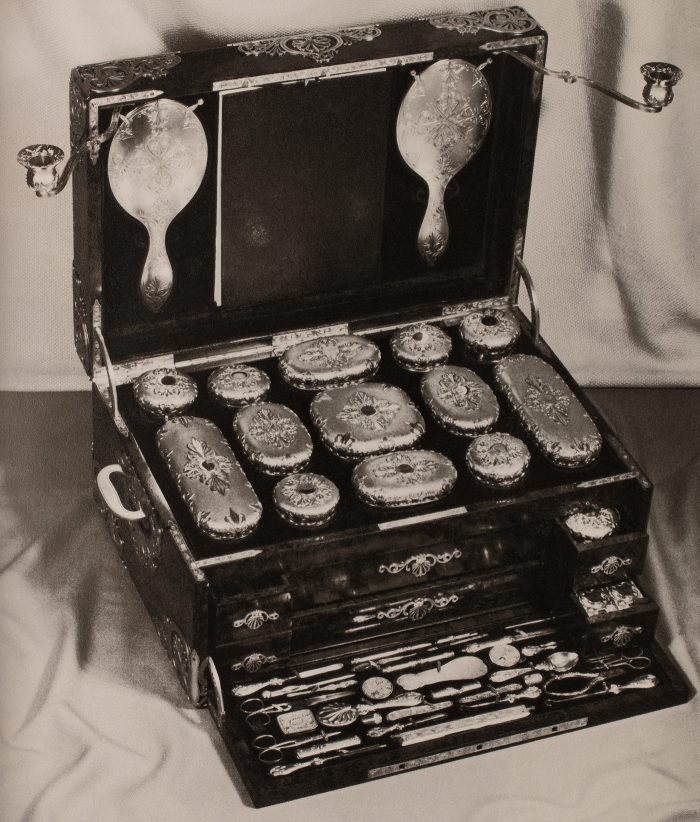
Asprey dressing case entered into the International Exhibition of 1862. This dressing case still remains in Asprey’s own archive at their Bond Street, London location.
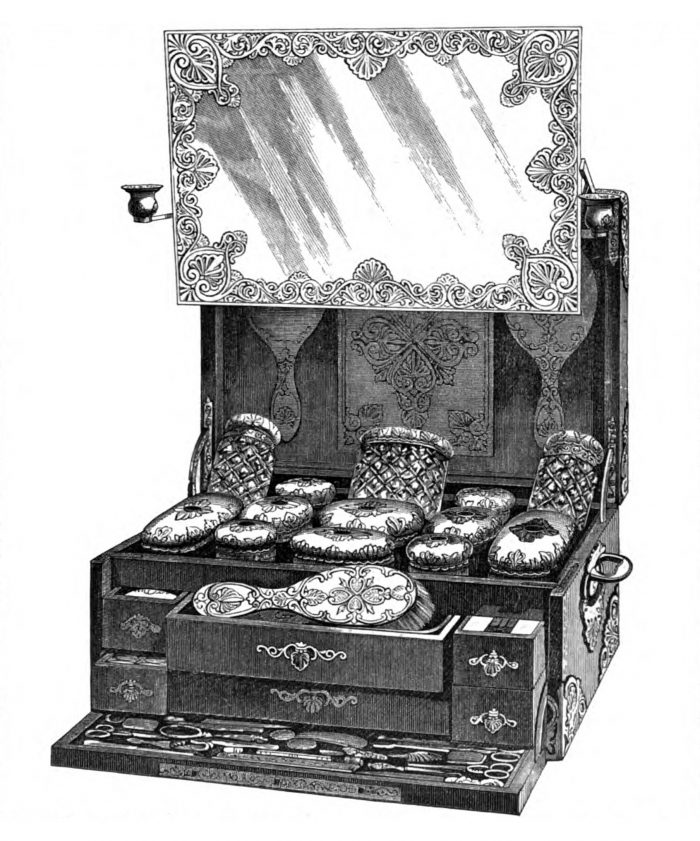
Illustration of an Asprey dressing case taken from ‘The Art Journal Illustrated Catalogue of the International Exhibition 1862’.
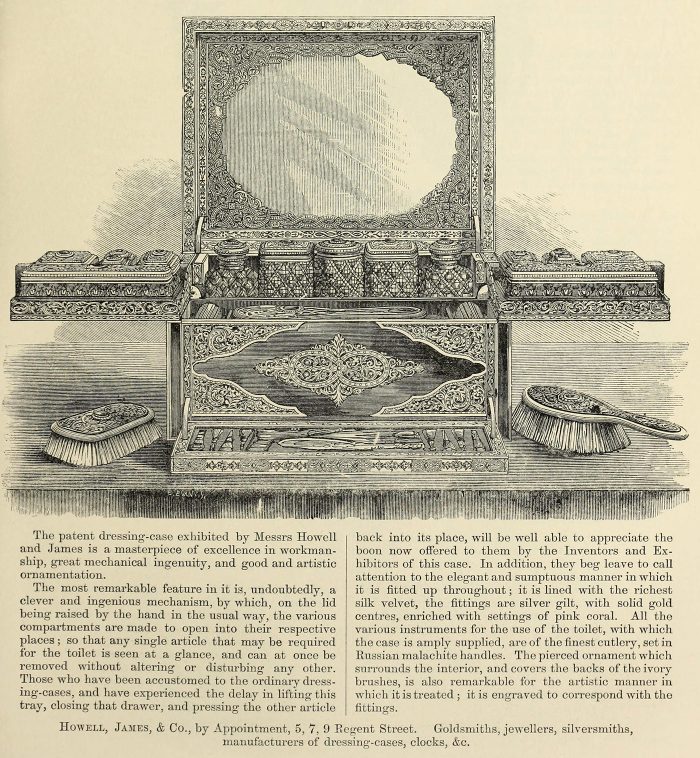
An illustration of a dressing case by Howell, James & Co taken from ‘The International Exhibition of 1862: The Illustrated Catalogue of the Industrial Department’.
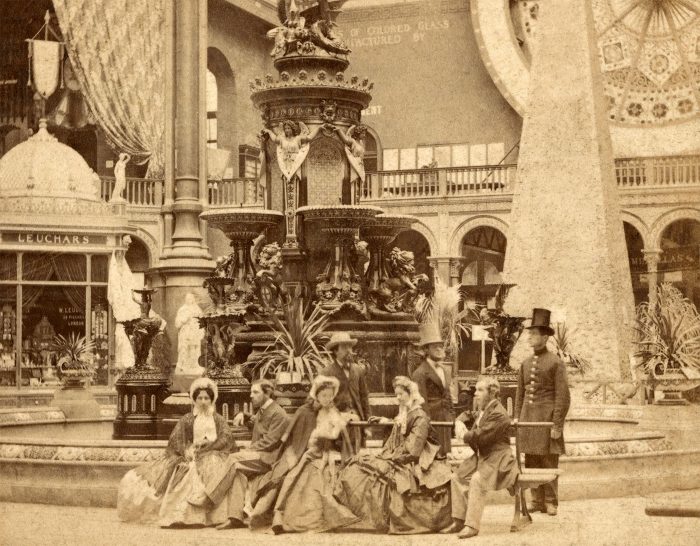
Leuchars’ display stand (to the left) at the International Exhibition of 1862.
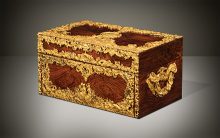 Price On Application
Price On Application